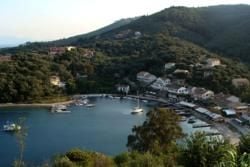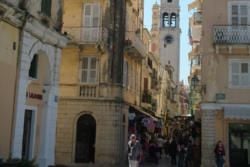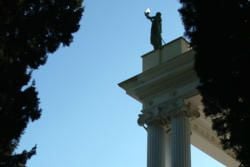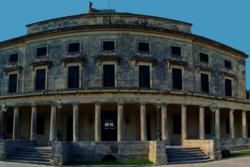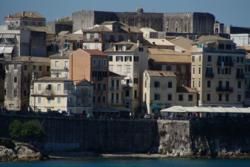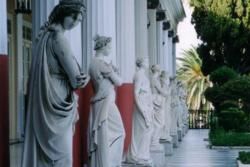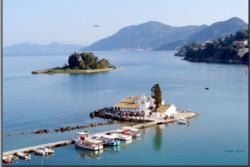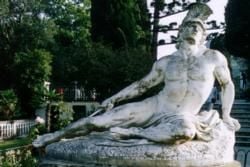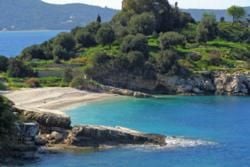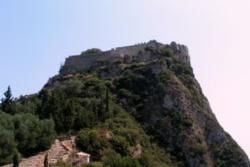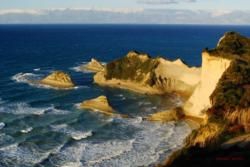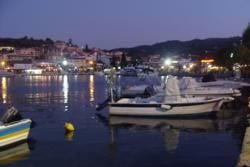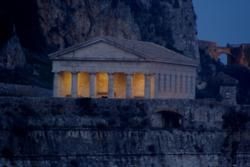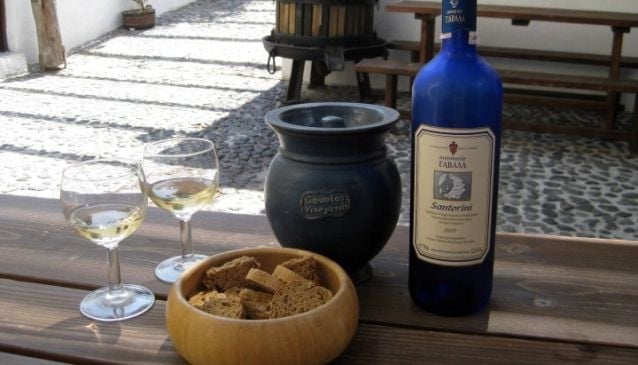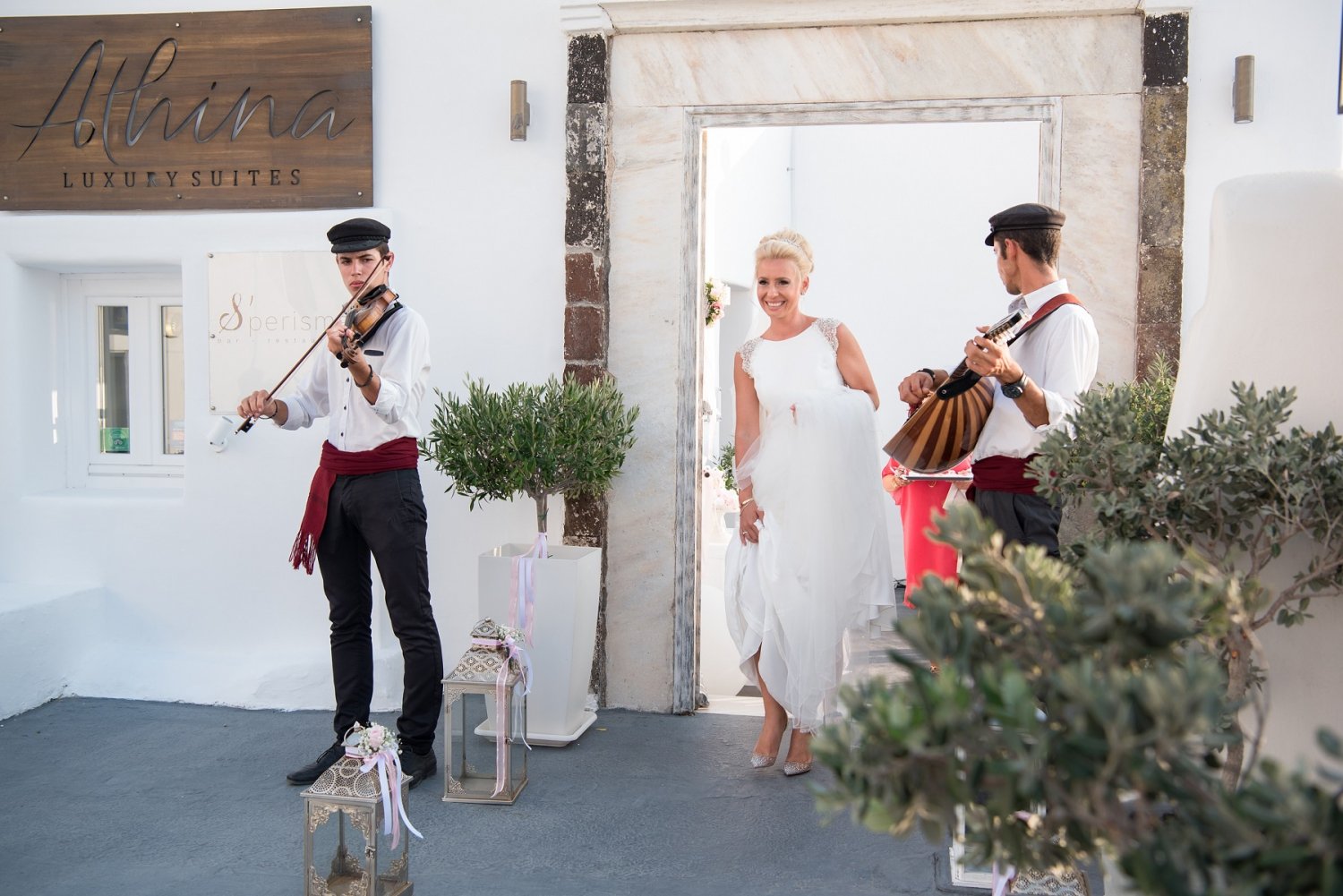Corfu
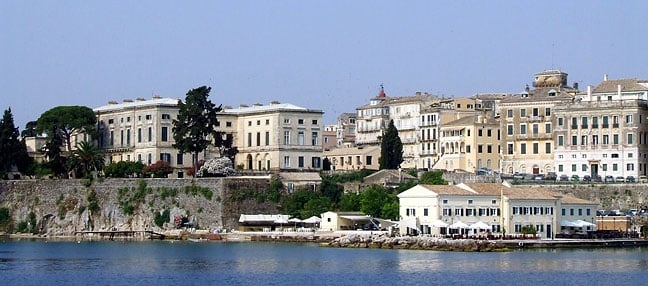
Corfu is like a heroine of an Italian opera, coming from a crossroad of its rich multi-cultural heritage, combined with the sensitivity of its people (the Eptanisians) and the spirit of a distant glorious past.
The fragrant breeze of Europe mixed with culture and splendid beaches. One of the few Greek Islands that combines the vegetation, with unique architecture; historic monuments; stunning natural landscape; crystal clear seas and classical music. And all due to the successive dominations of the Venetians, the French and the British over the centuries. The island has primarily become part of the Western rather the Levantine world.
This world famous island has a leading edge of its cultural expression and its historical origins, the capital town of Corfu (Kerkyra). This is the place where the first Greek University (the Ionian Academy in 1824), the first Philharmonic Orchestra and the First School of Fine Arts were founded.
Starting your walk from the Spianada, the biggest square of the Balkans region, is what is called the meeting point of the locals. This is where the daily ritual for many of them begins, having their morning coffee. The âupperâ side is the quiet spot where elder people and mammies are walking their babies, all being carefully dressed, usually with an Italian style. The âlowerâ part of the square is the most famous one, the point of social relief and tourist attraction of the city;
Liston has become Corfuâs trademark, where the aristocrats used to enjoy their evening promenades. The characteristic arcades (like the ones of Rivoli street in Paris) form the most romantic background setting for a welcome cup of coffee at one of the townâs cosy cafés.
In the sunny days, you can find one of the numerous spots of Spianada to admire the 19th-century remarkable works of French architecture, watch the cricket games, or participate in musical concerts organised throughout the year.
Did you know that Corfu was where the first tennis game took place (organised by the British) in Greece?
In 1896 the first Tennis Club was also founded.
In the beautifully preserved Old Town of Corfu, Renaissance, baroque and classical "repertoire" are harmonically combined with the local artistic traditions and customs. The Saint Michael and George Palace, the old fortress, austere public buildings of the Venetian rule uniquely blend with tiny alleyways and small secluded squares. Donât forget the smart suburbs of Mandouki, Garitsa and Sarokos.
Discover the night views of Old Town, and the daylight beauties of Corfu sightseeing through our multimedia collection.
Strolling through a complex of narrow cobbled streets with stairways and vaulted passages âlocally called "kantounia", will make you feel as if youâve travelled to Genoa or Naples. Corfu has fairly become a UNESCO world heritage site.
At the north part of Spianada square you will see the Saint Michael and George Palace being built during the British occupation, and the cityâs Cathedral, the Church of St. Spyridon, the islandâs patron Saint, whose relics are kept here. During Easter, this is the meeting point for a number of litanies and the procession of the Epitaph on Good Friday. The churchâs bell tower will certainly remind you of that of San Giorgio dei Greci in Venice.
Four annual processions are held every year during which the body of Saint Spyridon is carried around the streets of the city. All the philharmonic bands of the city accompany them creating a remarkable awe-inspiring spectacle.
The impressive 15th century Old Fortress with the wooden bridge and contrafossa; enjoy some of the summer concerts with classical music and jazz organised by the Ionian Academy, or have a cool drink relaxing at the Yacht Club.
The Museum of Asian Art: Being the only one of its kind, founded in 1927, housed in Saint Michael and George Palace.
Archaeological Museum: with all the important finds from the temple of Artemis and excavation finds from the ancient city of Corfu.
Byzantine Museum: It is housed in the Church of the Virgin Mary Antivouniotissa with an interesting collection of icons and ecclesiastic items from the 15th to the 19th century.
The Banknote Museum with the most complete collection of Greek coinage since 1822.
Dionysios Solomos Museum: The national Poet of Greece. Solomos lived in a state of self-imposed isolation, and Corfu offered him the ideal environment to work on his studies in poetry. Today his house hosts a museum dedicated to his honour.
Mon Repos Palace was built by the British Commissioner Adams as a gift to his wife. It is a small but beautiful palace with colonial elements, operating nowadays as a museum. In this luxurious dwelling, Prince Philip, the Duke of Edinburgh was born in 1821. Enjoy the view and the sun in the park around the palace, also ideal for long romantic walks.
Kanoni (canon) offers from its circular terrace an amazing view across the island of Pontikonissi, one of the most photographed spots of Corfu. An ancient myth says that this rocky islet was a Phaeacian ship that was turned into stone.
Paleopolis is where the ancient cityâs Agora (market) was located. Admire the remains of several public buildings erected there along with sanctuaries, workshops and residencies.
Achilleion is a fairy palace built by the Empress Elisabeth of Austria, who fell in love with the island, and she dedicated this palace to Achilles as she cherished the belief that he represented the very soul and fairness of Greece.
The entire island is ideal for exploration and excursions. We strongly recommend the northwest side where of course you will find Sidari, and Mesaria, both having two magnificent seaside, and numerous hotels, bars and shops to walk around.
A bit further, the Venetian village of Peroulades is rather quieter, with perfectly preserved houses, decorated with coats of arms and relief representations on their entries. A close beach is Logas, but you will have to walk to get there.
Moving east, you will find the Astrakeri beach, or heading to the other side, you can admire the Aggelocastro (Angel castle) a 13th century fortress, and make a stop at Paleokastritsa. It has the best view from the entire island.
The southwest side of Corfu is full of endless beaches full of dunes, like Saint George and Marathias.
And donât leave before you pay a visit to the nearby islands of Paxi and Antipaxi.
The island of Corfu is a magical destination all year long: colourful music events, culinary feasts, religious festivals, carnival celebrations âknown for their deep Venetian influences, and the most joyful Easter in Greece form an exquisite mosaic of experiences.
As Edward Lear wrote back in 1863, "The more I see from this place, the more I feel that no other spot on earth can be fuller of beauty".
- The island is connected by ferry to Patras, and Igoumenitsa.
- You can reach Corfu by aeroplane from Athens and Thessaloniki
| ARGOSTOLI SERVICES | PHONE NUMBER |
| Municipality | +30 26610-44410 |
| Airport | 26610-89600 |
| Police | 26610-27778 |
| Port Police | 26610-32655 |
| Tourist Police | 26610-30265 |
| Hospital centre | 26610-82200 |
| Local buses (KTEL) | 26610-28928 |
| Archaeological Museum | 26610-30680 |
| Banknote Museum | 26610-41552 |
| Museum of Asian Art | 26610-30443 |
| Byzantine Museum | 26610-38313 |


